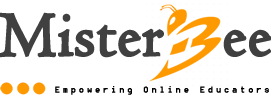Tailor-Made Training: Elevating Business English Proficiency through Needs Analysis
In the dynamic world of language education, the traditional approach to teaching English as a Foreign Language (EFL) is evolving, with a growing emphasis on personalized instruction. This shift is particularly pronounced in the context of Business English, where generic language training often falls short of meeting the unique demands of professionals. This article explores the crucial elements of needs analysis and tailor-made training, highlighting their significance in honing the language skills of Business English learners.
The Significance of Needs Analysis in Business English:
Business English learners face distinct challenges that demand a specialized approach to language instruction. Needs analysis in the realm of Business English transcends assessing general language proficiency. It involves a meticulous examination of the specific communication hurdles encountered in the professional sphere – from negotiating deals and delivering impactful presentations to mastering industry-specific vocabulary. Understanding these nuances is essential for crafting effective and targeted language training programs.
Needs analysis allows educators to identify the gaps in language proficiency and create a roadmap tailored to the learners’ professional goals. By acknowledging the unique language needs of Business English students, instructors can ensure that the training provided is not only relevant but directly applicable to real-world scenarios in the corporate landscape.
Designing Tailor-Made Training for Business English:
Armed with the insights gained from needs analysis, the next step is the design of tailor-made training programs. These programs are customized to address the specific language aims of Business English learners, focusing on the intricacies of professional communication. Tailor-made training goes beyond generic language exercises and includes industry-specific content, targeted vocabulary development, and simulations of authentic business scenarios.
This personalized approach fosters a sense of ownership and engagement among learners. It allows them to develop the language skills crucial for success in their professional endeavors, from effective email correspondence to confident participation in meetings and negotiations. Tailor-made training recognizes the diverse strengths, weaknesses, and learning preferences of individual students, providing a more efficient and enjoyable learning experience.
Moving Beyond Traditional Course Books:
To truly meet the unique needs of Business English learners, educators are moving beyond the confines of traditional course books. Incorporating a diverse range of resources, such as authentic materials, industry-specific content, and multimedia resources, ensures that learners are exposed to the real-world language usage prevalent in their professional domains.
This eclectic mix not only enhances language acquisition but also prepares Business English students to navigate the complexities of professional communication with confidence. By incorporating real-world scenarios and industry-specific vocabulary, educators can bridge the gap between classroom learning and the practical language skills required in the workplace.
Conclusion:
In the evolving landscape of Business English education, the key to success lies in the careful integration of needs analysis and tailor-made training. By understanding the unique language requirements of professionals and designing personalized programs that address these needs, educators can empower Business English learners to excel in their careers. As language instruction continues to adapt to the specific demands of the business world, the focus on needs analysis and tailor-made training remains paramount in preparing individuals for success in the global workplace.
Our comprehensive training in Teaching Business English features a detailed focus on performing needs analyses and designing tailor-made training to meet the precise needs of learners. CLICK HERE to learn more!




